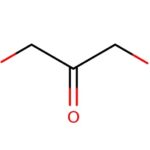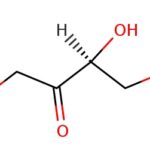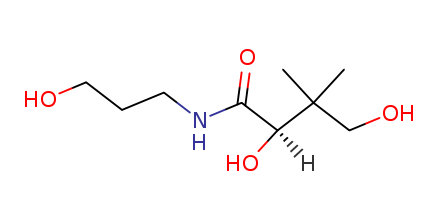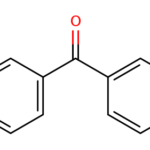Introduction
Skin protection is of paramount importance in maintaining healthy and youthful-looking skin. With the wide array of sunscreens available, understanding the differences between mineral and chemical sunscreens can help you make an informed decision about which type suits your needs best. In this article, we will delve into the intricacies of mineral and chemical sunscreens, exploring their composition, mechanism of action, efficacy, safety considerations, and application experience. Additionally, we will debunk common myths, shed light on the role of regulation and certification, discuss best practices for sunscreen application, and explore innovative formulations that pave the way for the future of sun protection.

Understanding Mineral Sunscreens
Mineral sunscreens, also known as physical sunscreens, are formulated with active ingredients such as zinc oxide and titanium dioxide. These ingredients work by forming a physical barrier on the skin, reflecting and scattering harmful ultraviolet (UV) rays away from the skin’s surface. The larger particle size of zinc oxide and titanium dioxide contributes to their ability to provide broad-spectrum protection, covering both UVA and UVB rays. However, advancements in formulation techniques have led to the development of micronized particles that minimize the undesirable white cast sometimes associated with mineral sunscreens.
Delving into Chemical Sunscreens
Chemical sunscreens, on the other hand, contain organic compounds like avobenzone, oxybenzone, and octinoxate, among others. These compounds work by absorbing UV radiation and converting it into heat, which is then released from the skin. Chemical sunscreens offer advantages such as lighter textures and easier spreadability, making them more appealing for everyday use. However, they may require specific combinations of active ingredients to provide broad-spectrum protection.
Comparing Efficacy and Protection
When it comes to efficacy and protection, both mineral and chemical sunscreens have their strengths. Mineral sunscreens offer immediate protection upon application, while chemical sunscreens need some time to become effective. However, chemical sunscreens tend to have higher Sun Protection Factor (SPF) ratings, providing a wider range of sunburn protection. The photostability of sunscreens, or their ability to maintain their effectiveness under UV exposure, is another crucial aspect to consider. Mineral sunscreens are generally more photostable, while some chemical sunscreens may degrade more quickly, necessitating frequent reapplication.
Safety Considerations
Skin sensitivity and allergies are important factors to consider when choosing a sunscreen. Some individuals may be prone to allergic reactions with certain chemical sunscreen ingredients, making mineral sunscreens a safer option. Additionally, concerns about potential hormone disruption have arisen due to the presence of some chemical sunscreen ingredients, although research in this area is still ongoing. Understanding your skin’s specific needs and consulting with a dermatologist can help you make an informed decision.
Application and User Experience
The texture and feel of sunscreen on the skin greatly impact user experience. Mineral sunscreens often have a thicker consistency, which can leave a slight residue. However, newer formulations have improved texture and reduced the white cast effect. Chemical sunscreens are typically lighter and more cosmetically elegant, making them easier to apply and blend into the skin. The absorption rate and residue left by chemical sunscreens can vary based on the specific formulation.
Choosing the Right Sunscreen for You
Choosing the right sunscreen depends on several factors, including personal preferences, skin type, desired level of protection, and an understanding of potential risks and benefits. Ethylhexyl triazone, a versatile ingredient commonly found in chemical sunscreens, offers effective UVB protection and stability while maintaining a light texture. Considering the specific benefits and limitations of each sunscreen type can help you make an educated decision.

Sunscreen Myths Debunked
Misinformation about sunscreens abounds, leading to confusion among consumers. Let’s debunk some common myths. Myth 1: Chemical sunscreens are more effective than mineral sunscreens. The truth is that both types can provide adequate protection when used correctly. Myth 2: Mineral sunscreens leave a white cast on the skin. While this may have been true in the past, modern mineral sunscreens have significantly improved in terms of texture and appearance. Myth 3: Chemical sunscreens are harmful to your health. While there are ongoing studies to assess potential risks, when used as directed, chemical sunscreens are considered safe for most individuals.
The Role of Regulation and Certification
Regulation plays a vital role in ensuring the safety and efficacy of sunscreen products. The U.S. Food and Drug Administration (FDA) has established guidelines for sunscreen labeling, including requirements for SPF, broad-spectrum protection, and water resistance claims. Recognized certifications, such as the European Cosmetics Association (Cosmetics Europe) and the Australian Therapeutic Goods Administration (TGA), provide further reassurance of product quality.
Best Practices for Sunscreen Application
Applying sunscreen correctly is crucial for optimal protection. To achieve the labeled SPF, it is essential to apply an adequate amount of sunscreen. Experts recommend using approximately one ounce (30 milliliters) to cover the entire body. Reapplication is equally important, especially after swimming or sweating. It is recommended to reapply sunscreen every two hours or more frequently if exposed to direct sunlight for an extended period. Additionally, complementing sunscreen use with other sun protection measures, such as seeking shade and wearing protective clothing, is key to comprehensive sun protection.
Innovative Sunscreen Formulations
Advancements in sunscreen technology have led to innovative formulations that address the limitations of traditional sunscreens. Newer mineral sunscreens employ micronization techniques to reduce the white cast effect, while hybrid sunscreens combine the benefits of mineral and chemical filters. This hybrid approach offers broad-spectrum protection with improved aesthetics, appealing to those who value both efficacy and user experience.
The Future of Sunscreen
The future of sun protection is promising, with ongoing research and development efforts aimed at enhancing sunscreen efficacy, safety, and sustainability. Scientists are exploring novel active ingredients, such as ethylhexyl triazone, to improve sunscreen performance. Furthermore, advancements in nanotechnology and formulation techniques hold the potential to create sunscreens with enhanced photostability and eco-friendly profiles.
Conclusion
In the showdown between mineral and chemical sunscreens, it is essential to understand their differences, benefits, and limitations. Both types offer effective protection against harmful UV rays, but considerations such as skin sensitivity, desired texture, and potential environmental impact can influence your choice. By debunking common myths, following best practices for application, and staying informed about regulatory guidelines, you can make an informed decision that prioritizes both your skin’s health and your personal preferences. Remember, ethylhexyl triazone and other innovative ingredients are continuously shaping the future of sun protection, providing exciting possibilities for improved skin defense.
Related Products











